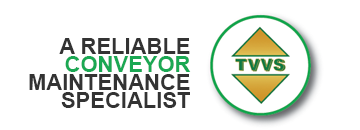If you own a manufacturing company, you’ll know the importance of keeping on top of your equipment’s maintenance. After all, your machinery breaking down and halting production is one of the worst situations you can possibly find yourself in as this will temporarily starve revenue.
When it comes to maintaining equipment and machinery, there are various different approaches you can take. Some strategies involve addressing repairs once they arise, while others take more of a proactive approach.
In this blog, we’ll go over some of the most common types of maintenance strategies in manufacturing. As you’ll see, some are much more sensible than others!
Reactive Maintenance
This strategy works on a ‘when it breaks, we’ll fix it’ basis. As you might’ve guessed, this isn’t the wisest of strategies as it could put your operation out of action for a while when something goes wrong. And in manufacturing where machinery and equipment are working relentlessly for multiple every day, stuff tends to go wrong!
Relying on fixing your equipment only after it has failed leads to inevitable downtime, which is sure to disrupt production schedules and hit you in the pocket!
Another reason reactive maintenance is bound to cost you more is that emergency repairs are sure to result in higher bills. This is due to the fact that parts will need to be sought urgently and mechanics will have to attend in as short an amount of time as possible. All of this is sure to cost a pretty penny!
Lastly, depending on the nature of your business, a malfunctioning production line can result in issues with your products. In some cases, this might not be noticeable until some of your goods have left your facility, which may erode customer confidence and harm your reputation.
In summary, reactive maintenance is not recommended for manufacturing companies due to the variety of drawbacks.
Preventative Maintenance
On the other hand, preventative maintenance takes a proactive stance by addressing any potential issues before they require full-scale repairs.
This involves scheduled inspections, routine upkeep and timely repairs whenever any potential issues are spotted to help keep our machinery and equipment in optimal working condition.
Although this maintenance strategy requires more up-front investment than reactive repair, in the long run, a preventative approach is sure to save money. That’s because it’ll help you avoid costly downtime and exorbitant emergency repairs.
Additionally, preventative maintenance enhances your business’ operational efficiency, ensures the quality of your products remains consistent and contributes to a more reliable and sustainable production process.
So if you’re a manufacturing business, it’s advisable to follow this maintenance strategy, at least above the reactive approach, which is inferior in practically every way!
Usage-Based Maintenance
Falling somewhere in the middle of the previous two strategies is usage-based maintenance, which sees manufacturers replacing parts after a specified number of uses or a set period of time.
Although this approach isn’t quite as thorough as preventative maintenance, it’s most certainly a better strategy than the reactive model.
By replacing parts after they’ve been used a number of times, this can help avoid the inevitable problems that will arise when a part is overused. Having said that, it can be difficult to know precisely when a part will break down, and the time it may take to deteriorate is never set in stone.
Therefore, adopting this strategy may leave you open to downtime if your equipment breaks down unexpectedly before your scheduled maintenance.
One upside to using this strategy is it’s more cost-effective than preventative maintenance as you won’t have to pay for someone to give your machinery a regular once over, but if any parts break down without warning, you might end up losing more revenue than you’ve saved!
Condition-Based Maintenance
Similar to the last strategy, condition-based maintenance sits in the middle of preventative and reactive approaches.
With this strategy, you replace parts when they look like they’re becoming worn and won’t work as they should.
Clearly, this approach comes with risks, mainly that it’s difficult to fully monitor parts as some components won’t be visible. Moreover, it’s difficult to predict precisely when parts will need replacing, and very often, if you’re relying on visible signs your equipment is suffering from wear and tear, it may well be too late!
So while this strategy will undoubtedly cost less in the short term, you run the serious risk of your equipment breaking down if you don’t take a more proactive approach.
Additional Benefits
After looking at four maintenance strategies, it’s pretty clear to see the most effective method is the preventative approach. This involves hiring someone to regularly check and maintain your equipment.
If you’re still not convinced, we’ll round off this post with some info on the additional benefits of services such as conveyor maintenance services. These include:
Increases Longevity:
No doubt you’ve invested a lot of money into your equipment, so it makes sense to protect your investment with regular maintenance.
By ensuring you get many years of use out of your machinery, you can do just that. Regular maintenance ensures that your gear will enjoy a longer and more productive life, safeguarding your initial investment and reducing the likelihood of frequent replacements.
Improves Safety:
As a business owner, safety is no doubt a top priority. This is why you should never neglect essential maintenance as it can lead to safety hazards. Damaged equipment can cause accidents, ranging from minor incidents to severe injuries.
Having your machinery regularly inspected ensures they’re in good working condition, which reduces the risk of workplace accidents and creates a safer environment for all.
Projects Professionalism:
If you’re using machinery that’s showing signs of wear and tear, chances are this isn’t going to leave the best impression with any clients or partners visiting your premises.
By contrast, a safe, well-maintained production line will foster a sense of professionalism and instil confidence in everyone who steps foot inside your business, which can only be good for business!


